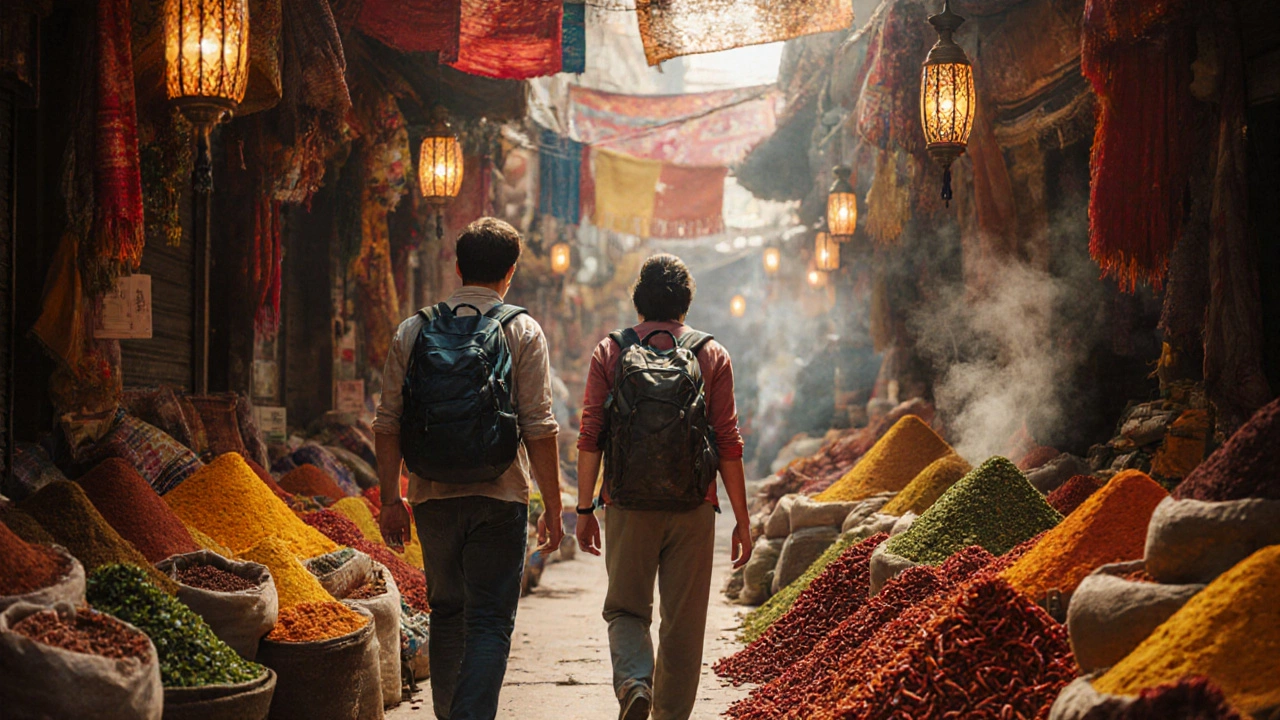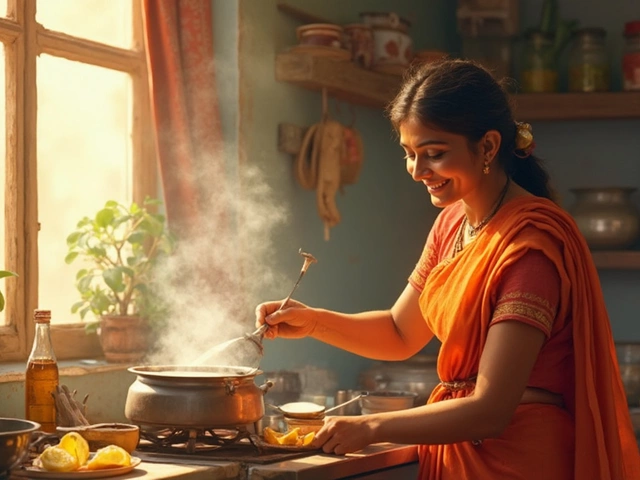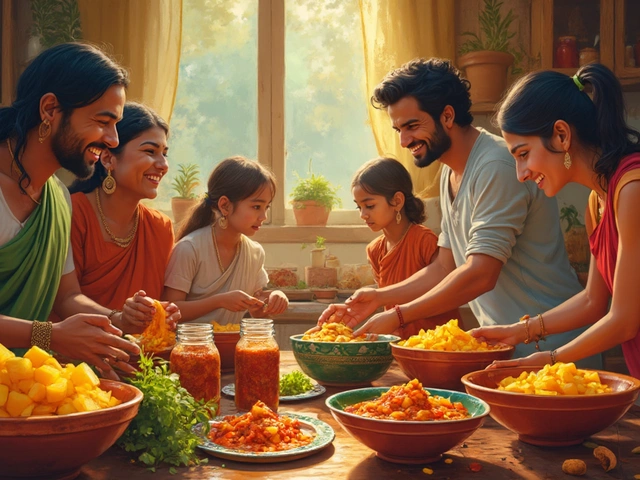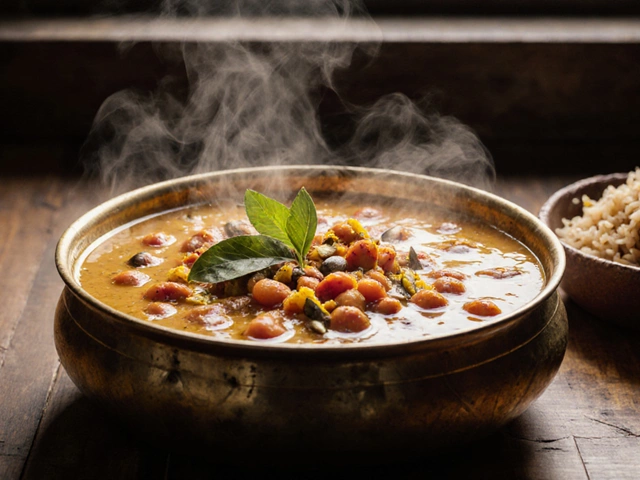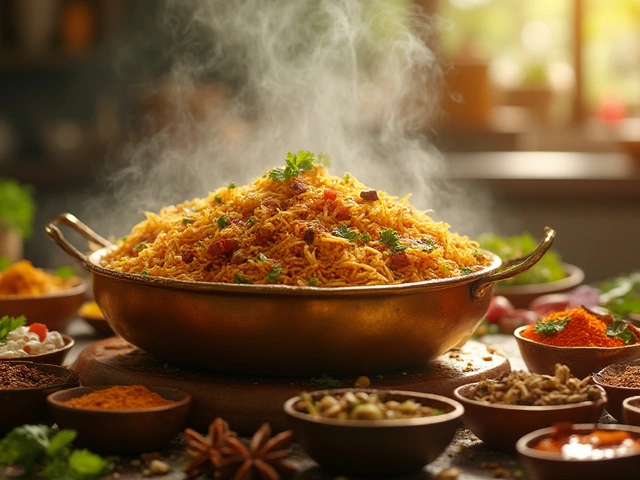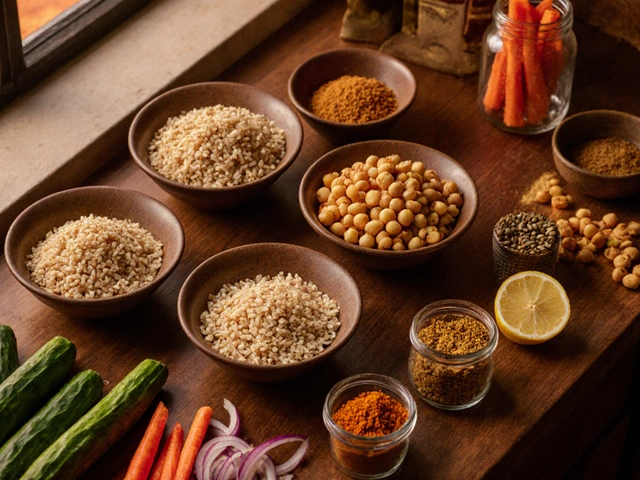Indian Food Customizer
Find Your Perfect Indian Meal
Select your preferences and we'll recommend dishes that match your taste.
Your Recommended Dishes
Stepping off a plane in Delhi, Mumbai, or Bengaluru can feel like entering a giant spice market. For many Americans the first question is simple: “What can I actually eat here without ending up in tears?” This guide breaks down the most approachable dishes, how to tweak them, and where to find familiar comforts while still soaking up the local vibe.
Getting a Grip on Indian Food Basics
Indian cuisine is a collection of regional cooking styles that use a wide palette of spices, herbs, and techniques. It ranges from the buttery richness of the North to the coconut‑laden heat of the South. The two biggest hurdles for American visitors are spice intensity and the prevalence of vegetarian meals.
Most Indian dishes can be classified by three core attributes:
- Spice level: From mild (often labeled "noodle" or "continental") to fiery ("extra hot").
- Protein type: Chicken, lamb, seafood, paneer (cottage cheese), or plant‑based legumes.
- Cooking method: Tandoor (clay oven), slow simmer, or quick stir‑fry.
Understanding these helps you spot a dish that matches your comfort zone.
Mild Dishes That Feel Familiar
If you prefer flavors that echo the comfort foods back home, start with these crowd‑pleasers:
- Butter Chicken - succulent chicken chunks simmered in a tomato‑cream sauce. The buttery base tones down heat, making it a safe intro.
- Paneer Tikka - grilled cubes of paneer marinated in yogurt and mild spices. It’s like a cheesy kebab.
- Masala Dosa - a crisp rice‑lentil crepe filled with mildly spiced potatoes, usually served with coconut chutney and sambar (a lentil stew you can ask to be less spicy).
- Naan - soft, leavened flatbread perfect for scooping sauces. Garlic or butter‑naan adds a familiar flavor.
- Chicken Biryani - aromatic rice layered with chicken, saffron, and gentle aromatics. Ask for “mild biryani" and you’ll get a fragrant, not fiery, dish.
When ordering, say “please make it less spicy” ("kam mirch" in Hindi) - most chefs will gladly tone it down.
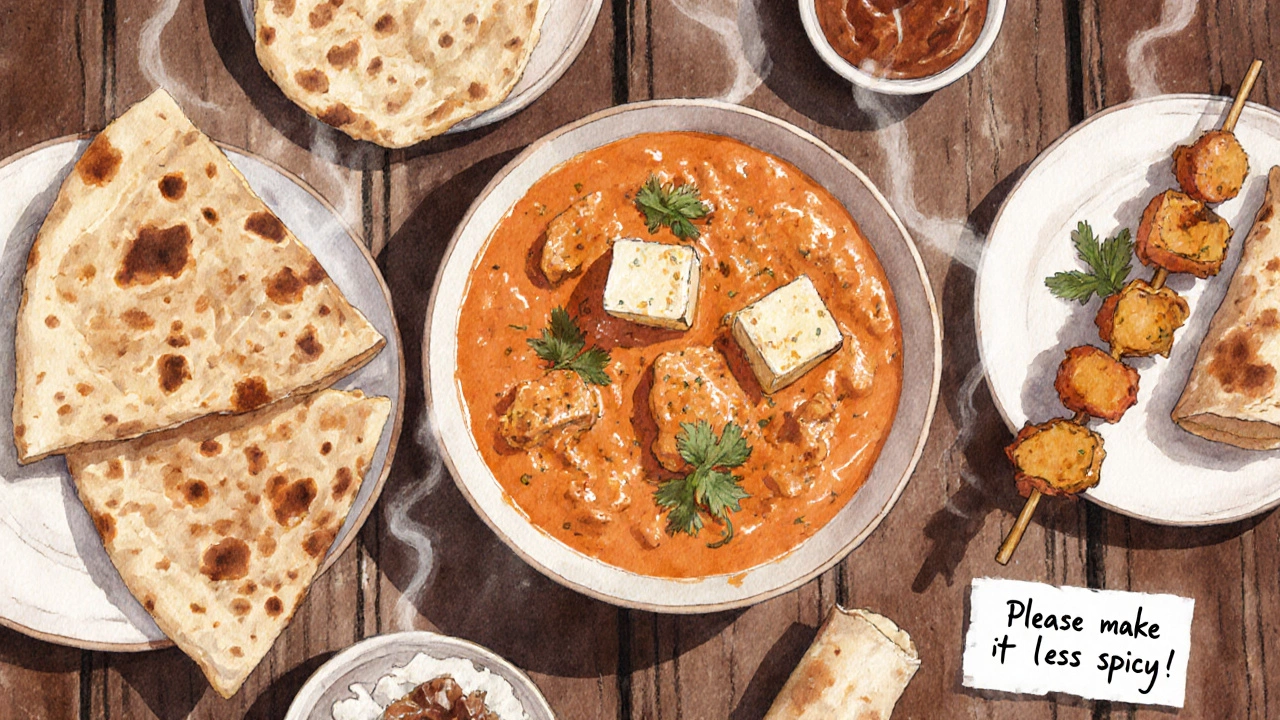
Vegetarian & Vegan Friendly Options
India is a vegetarian haven, and many dishes are naturally plant‑based. Here are safe bets for those avoiding meat:
- Chana Masala - chickpeas cooked in a tomato‑onion gravy. Serve with rice or naan.
- Aloo Gobi - cauliflower and potatoes spiced lightly, often finished with a dash of lemon.
- Dal Tadka - lentils tempered with cumin, garlic, and a hint of chili. Ask for “no extra chili" for a milder palate.
- Vegetable Biryani - a fragrant rice dish studded with mixed veggies and a splash of saffron.
- Masala Chai - spiced tea brewed with milk and sugar. It’s sweet, comforting, and a perfect caffeine fix.
All of these are naturally halal‑friendly and can be found in both upscale restaurants and street stalls.
International Chains and Familiar Comforts
Major Indian metros host a growing number of American‑style eateries-think Pizza Hut, KFC, and Starbucks. While these help ease the transition, you might also discover Indian‑run franchises that serve “American‑style" menu items:
- McDonald’s India - offers the classicBig Macbut replaces beef with chicken or paneer.
- Domino’s Pizza India - crusts and toppings are similar to the US, with added options like “Peppy Paneer”.
- Subway India - you can still get the familiar turkey or veggie sub, just request “no hot sauce”.
These chains are useful when you need a quick, predictable bite after a long day of sightseeing.
How to Tame the Heat: Customizing Your Order
Spice isn’t a mystery-it’s mostly about the amount of chilies and pepper added at the end of cooking. Here are quick tricks to keep dishes mild:
- Ask for “no green chilies” ("hari mirch nahi").
- Request “extra cream or yogurt” - dairy soothes capsaicin.
- Order “plain rice” or “roti” on the side to balance any heat.
- Choose dishes described as “tikka”, “kebab”, or “korma” - they’re usually cream‑based and less spicy.
- If you’re at a street stall, watch the cooking pot. A clear broth often signals a milder preparation.
Most chefs appreciate the effort to communicate, and many will happily serve a “milder version” without extra charge.
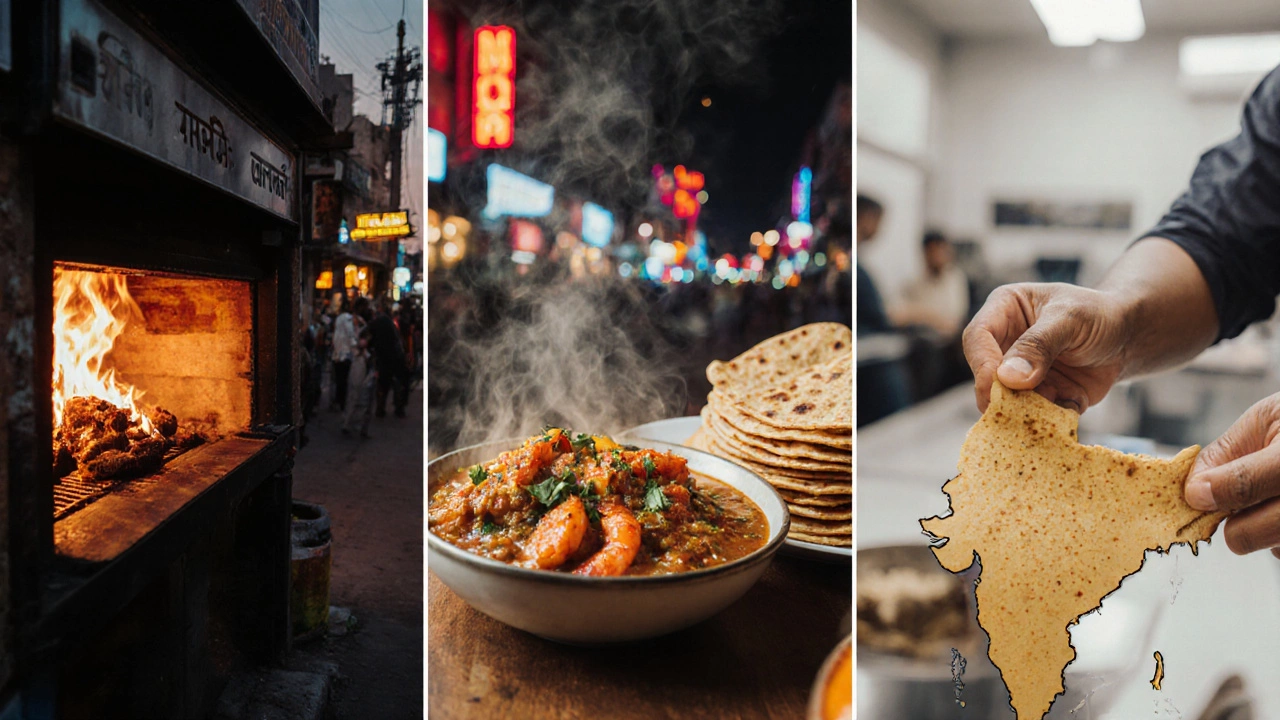
Regional Highlights: What to Try in Different Parts of India
India’s culinary map is diverse. Here’s a quick guide on what to look for in three popular travel hubs:
| Region | Mild Must‑Try | Vegetarian/Vegan | Quick Tip |
|---|---|---|---|
| North (Delhi, Punjab) | Butter Chicken, Dal Makhani | Paneer Butter Masala, Aloo Paratha | Order “tandoori roti” for a safe side. |
| West (Mumbai, Goa) | Prawn Koliwada (ask for less chili), Chicken Curry | Pav Bhaji (mild version), Masoor Dal | Try a “filter coffee” if you need an energy boost. |
| South (Bengaluru, Chennai) | Chicken Chettinad (request mild), Coconut Milk Curry | Masala Dosa, Lemon Rice | Ask for “plain curd” on the side to cool the palate. |
Each region also offers street‑food staples that can be tailored. A fresh “pani puri” vendor will let you control the tamarind water’s spiciness.
Practical Tips for Eating Safely and Comfortably
- Stay hydrated with bottled water. Avoid tap water and ice cubes.
- Eat at establishments that look busy; high turnover means fresher food.
- Check that meat is cooked through. The phrase “fully cooked” in Hindi is "puri tarah pakaya hua".
- If you’re dairy‑intolerant, ask for “no cream” or “no ghee" - many dishes can be made with oil instead.
- Carry a small packet of dry ginger or a peppermint chew to calm any unexpected heat.
With these pointers, you’ll spend less time worrying about food and more time enjoying the sights-from the Taj Mahal to the backwaters of Kerala.
Frequently Asked Questions
Can I find halal food throughout India?
Yes. Most major cities have dedicated halal zones, and many restaurants label dishes as halal on the menu. In Muslim‑majority states like Kerala and Uttar Pradesh, halal is the default.
What if I’m allergic to gluten?
Stick to rice‑based dishes (biryani, plain rice, dosa) and navi (lentil pancakes). Most breads like naan and roti contain wheat, so ask for a gluten‑free alternative.
Are street foods safe for tourists?
Generally yes, if the stall is busy and the food is cooked fresh in front of you. Look for vendors using fresh ingredients and clean cooking utensils.
How do I ask for a milder version of a dish?
Simply say “please make it less spicy” or “kam mirch”. Most chefs understand and will adjust the chili count or add cream to tone it down.
Which Indian city has the most “American‑friendly” food scene?
Delhi and Mumbai both host a mix of international chains and local eateries that cater to milder tastes. Delhi’s “Connaught Place” area has many restaurants offering grilled chicken and paneer dishes that feel familiar.
Armed with these choices, you’ll discover that Indian food can be as comforting as a home‑cooked meal while still offering adventure. The key is to start with familiar flavors, ask for adjustments, and gradually explore the spicier side as your palate adapts. Happy eating, and enjoy the journey!





